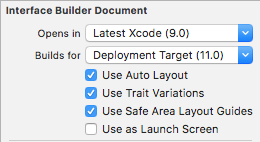In this tutorial, you’ll explore the new aspect ratio, and build an app with a search controller integrated into the navigation bar.
Then you’ll explore how to fix an app that was created shortly before the iPhone X announcement: is it enough to just turn on safe area? Read on to find out.
Rule: Compose your images so you don’t lose important visual information when Aspect Fill crops them.
Rules
- Avoid the sensor housing and home indicator, except for background image and vertically scrollable views.
- Avoid placing controls where the home indicator overlaps, or corners crop.
- Don’t hide or draw attention to sensor housing, corners or home indicator.
Rules
- Use safe area layout guides.
- Use margin layout guides.
- Center content or inset it symmetrically.
Recommendation: Use standard UI elements.
Note: The iPhone X is compact width in landscape orientation, so it behaves like the iPhone 8, not the 8 Plus.
- The iPhone X status bar is higher, so dynamically position content based on the device type, instead of assuming a fixed 20-pt height.
- Always show the status bar unless hiding it adds real value to your app.
- Use PDF for flat vector artwork; provide @3x and @2x of rasterized artwork.
- An app doesn’t use 3x if it doesn’t have a LaunchScreen.storyboard.
- If your app uses the swipe-up-from-bottom gesture, turn on edge protect with preferredScreenEdgesDeferringSystemGestures(): the user must swipe up twice to access the home indicator.
- If your app includes passive viewing experiences, turn on auto-hiding with prefersHomeIndicatorAutoHidden(): the home indicator fades out if the user hasn’t touched the screen for a few seconds, and reappears when the user touches the screen.
- Use the simulator to check portrait and landscape layout.
- Use an iPhone X device to test wide color imagery, Metal, front-facing camera.
- Don’t reference Touch ID on iPhone X. Don’t reference Face ID on devices that support Touch ID.
- Don’t duplicate system-provided keyboard features like Emoji/Globe and Dictation buttons.
What if you want to update an existing app for iPhone X?
-
First, update its assets, including background images, to PDF or add @3x images.
-
Then make sure it has a LaunchScreen.storyboard, and turn on Safe Area.
-
Safe area layout guides change top, bottom and edge constraints, so check these, and fix them if necessary.
-
Check for any layout that depends on a 20-pt status bar or 44-pt tool bar, and modify it to allow for different heights. Or, if your app hides the status bar, consider unhiding it for iPhone X.
-
Next, set View as to iPhone X, and check every layout configuration. Move controls away from the edges, corners, sensor housing and home indicator.
-
Consider integrating search view controllers into the navigation bar.
-
Build and run the app on the iPhone X simulator, and check every layout configuration. In landscape, check that table view cell and section header content is inset, but the background extends to the edges.
Source:





